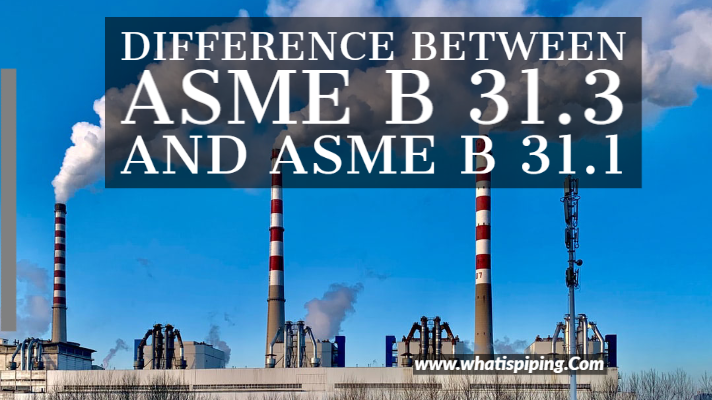
Asme B31.3 Process Piping Trial Plants And
Our fields of speciality are Piping Stress Analysis, Plant Layout, Piping Design & Engineering, and Information Management Software for Industrial Plants and Facilities worldwide.The ASME B31 Code for Pressure Piping consists of a number of individually published Sections, each an American National Standard, under the direction of ASME Committee B31, Code for Pressure.ASME B31.3-2012 Process Piping. (SST), incorporated in the year 1983, is a premier provider of Software Solutions and Engineering Services. Except as limited in para. 345.3.3 Piping With Expansion Joints (a) Unrestrained expansion joints depend on external main anchors to resist pressure thrust forces. Piping designed for vapor or gas shall be provided with additional temporary supports, if necessary, to support the weight of test liquid. ASME B31.3-2016 345.3.2 Temporary Supports.
Our Software Solutions offer flexibility to suit your business needs where they can be deployed in your premises or in the cloud. ASME B31.3 Code for Pressure Piping - Chemical Plant and Petroleum.Here is a list of Software Solutions and Engineering Services currently offered. Rules for piping found in welding procedure qualifications and EN 287 for welder qualifications in particular. This important new standard provides requirements for materials and components, design, fabrication, assembly, erection, examination, inspection, and testing of piping. 01:01 modified 10:51 ASME B31.3-2012 Process Piping.

Typical vertical supports to carry dead-weight are:Both rod hangers and resting steel supports fully restrain downward pipe movement but permit pipe to lift up at such supports. If the piping system is not supported in the vertical direction (i.e., in the gravity direction) excepting at equipment nozzles, bending of the pipe due to dead-weight may develop excessive stresses in the pipe and impose large loads on equipment nozzles, thereby increasing the susceptibility to "failure by collapse".Various international piping codes impose limits, also called "allowable stresses for sustained loads", on these axial stresses generated by dead-weight and pressure in order to avoid "failure by collapse".For the calculated axial stresses to be below such allowable stresses for sustained loads, it may be necessary to support the piping system vertically. These axial pressure stresses vary only with pressure, pipe diameter and wall thickness, all three of which are pre-set at the P&ID stage and hence these axial pressure stresses cannot be reduced by changing the piping layout or the support scheme.On the other hand, dead-weight causes the pipe to bend (generally downward) between supports and nozzles, producing axial stresses in the pipe wall (also called "bending stresses") these bending stresses linearly vary across the pipe cross-section, being tensile at either the top or bottom surface and compressive at the other surface. In addition, internal pressure develops axial stresses in the pipe wall.
Asme B31.3 Process Piping Free Thermal Deformation
Introduce as much "offsets" as possible between equipment nozzles (which are normally modeled as anchors in pipe stress analysis).For example, if two equipment nozzles (which are to be connected by a pipeline) are in line, then the straight pipe connecting these nozzles is "very stiff". Introduce bends/elbows in the layout, as bends/ elbows "ovalize" when bent by end-moments, which increases piping flexibility. This is normally accomplished as follows: So, in order to avoid "fatigue failure" due to cyclic thermal loads, the piping system should be made flexible (and not stiff). When such calculated thermal stress ranges exceed the "allowable thermal stress range" specified by various international piping codes, then the system is susceptible to "failure by fatigue". If the piping system is not restrained in the thermal growth/contraction directions (for example, in the axial direction of a straight pipe), then for such cyclic thermal load, the pipe expands/contracts freely in this case, no internal forces, moments and resulting stresses and strains are generated in the piping.On the other hand, if the pipe is "restrained" in the directions it wants to thermally deform (such as at equipment nozzles and pipe supports), such constraint on free thermal deformation generates cyclic thermal stresses and strains throughout the system as the system goes from one thermal state to another.

Generally, some of the vertical weight supports can be modified as "integral 2-way vertical and lateral restraints". To withstand static seismic 'g' loads, "integral 2-way vertical and lateral restraints" are required. To protect piping against both horizontal and vertical movement during earthquake, some of the resting supports may be made as "integral 2-way vertical and lateral restraints".Fortunately, to carry sustained loads, normally vertical supports (as those listed under the Section titled "Sustained Load" above) are required. During an earthquake, the earth may also move vertically. To protect piping from wind (which normally blows in horizontal plane), it is normal practice to attach "lateral supports" to piping systems. Introduce "intermediate anchors" (which restrain pipe movement in the three translational and three rotational directions) at appropriate locations such that thermal deformation is absorbed by regions (such as expansion loops) away from equipment nozzles.A few example layouts are presented to illustrate how loops/offsets, axial restraints and intermediate anchors are used to reduce thermal stresses in piping (and resulting nozzle loads).This type of load is imposed on piping by occasional events such as earthquake, wind etc.
Axial restraints and intermediate anchors are recommended only to direct thermal growth away from equipment nozzles. So, thermal stresses and equipment nozzle loads will normally decrease as the number of supports goes down.


 0 kommentar(er)
0 kommentar(er)
